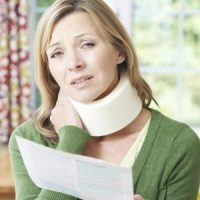4 Steps To Proving Negligence

Negligence is a legal term used to describe a failure to use the degree of care that a reasonable person would have used in the same circumstances. This behavior usually consists of actions, but can also be made up of omissions, or a failure to take certain actions when the person has a legal duty to do so. Victims of negligence are often entitled to recover damages from the careless party, compensating them for injury-related losses, such as medical bills, lost wages, property damage, and even pain and suffering. This, however, is only possible when a plaintiff can prove that someone else was negligent, a process that requires the completion of four steps. A dedicated Fort Lauderdale personal injury lawyer can play an instrumental role in satisfying this burden. To learn more, please reach out to our legal team today.
Determining Duty of Care
There are four elements that a person must establish in order to prove negligence, the first of which involves demonstrating that the accused had a legal duty to use reasonable care. Employers, for instance, are responsible for keeping their workplaces safe for their employees, while drivers are legally required to follow traffic laws and maintain awareness on the road. The particular duty of care required in a particular situation will, however, depend on the circumstances. A doctor, for instance, must use a greater degree of care in treating a patient than a regular person going about his day-to-day life.
Proving a Breach of Duty
Once a person’s specific duty of care has been established, an injured party will need to prove that that duty of care wasn’t fulfilled, or that the legal duty was breached. To demonstrate this, plaintiffs will need to provide evidence, including witness accounts, medical bills, video recordings of the accident, photographs, and even expert testimony. A driver who ran a red light, for instance, causing a collision in the intersection, could be found to have violated his or her duty of care to abide by the traffic laws, but only if the injured party could prove through traffic camera recordings, police reports, or eyewitness testimonies that the defendant actually ran the red light.
Demonstrating Causation
The third step in proving negligence involves demonstrating that a plaintiff’s specific injuries were the result of the at-fault party’s actions. In the previous example, for instance, the injured party would need to provide evidence of medical bills and treatment, proving that his or her injuries were sustained in the collision with the driver who ran the red light and not as the result of an outside incident.
Calculating Damages
The fourth and final step in proving negligence involves demonstrating damages, or the losses that a person sustained in the accident in question. Medical records, doctor’s notes, hospital bills, pay stubs, invoices, and receipts will all need to be priced at this point. How much a person can collect will depend on the degree of negligence exhibited by the other party and the severity of the accident.
Call Today for Legal Help
If you were injured in an accident and think that someone else’s carelessness was the cause, reach out to one of the dedicated Florida personal injury lawyers at Boone & Davis today for a free case evaluation. We can be reached at 954-566-9919 or via online message.
Resource:
law.cornell.edu/wex/negligence
